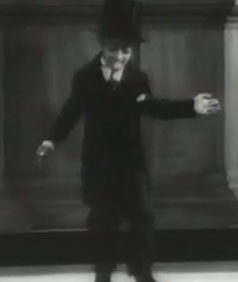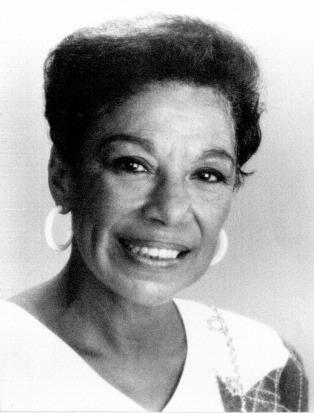A whole new vista, unexpected but clear, opened up as I sat next to and conversed with Dr. Wisdom on a border-crossing shuttle, going from Alabama to Georgia the first weekend in November. There we were, sitting side by side as we pulled out of Auburn heading for Atlanta to get to our northern flights on time, one going to the Midwest and the other heading East.
Transition was in the air. The calendar had shifted; so had the hour. Daylight was ebbing and January was waiting in the wings. Thanksgiving was just a heart-beat away, and a time of renewal, adjustment, and change was in the ascendant, which meant the death and demise of another year.
Over the weekend, we were guests at a cultural conference, hosted by ABCC, an acronym for the Association of Black Culture Centers that I like to think of as offering more than the basic alphabetic line-up and reflecting institutional gains from a tumultuous, visionary era. The old-world Alabama hotel, steeped in tradition, was filled to bursting with Civil Rights figures, eager and ambitious students, dashiki merchants, book sellers, and a freshet of information. It was time, we realized, to recall and sift through the nuggets of what had been seen, experienced, and learned over the past half century at least, making sense of it all, as much as possible.
Like the Ancient Mariner, I was returning home intellectually more informed, maybe even deeper in soul and wiser in insight, although I had not yet fully parsed out my learning, particularly when it came to the surge of activity that galvanized the Civil Rights Movement more than fifty years earlier. Then, it had momentum and the pulse of a time that could and would not wait, propelled forward by a momentum that was not only political and social but also a cultural churning and overturning.
From another vantage, it was clear that some realities remain unperturbed. On the far-flung Auburn campus, actually the most long-standing part of it, there is a small brick corner chapel. Seemingly ageless, it has been many different things in the changing thrust of times since its 1851 erection. At one point, it served as a war hospital then it became a youth organization, catering to boys as well as girls. Most recently and famously, it was the home of a theatrical troupe. Now on the National Historic Register, the Auburn Chapel is proud of its resident ghost named Sydney, a Civil War hold-over, who is partial to Skittles. Could he and Trayvon Martin, another southerner, become fast friends in their respective eras of post-demise? If so, how would such a dialogue proceed, I wondered.
“That trigger-happy, wanna-be policeman,” Sydney might say to Trayvon. “He needs a real war. He loves pointing that gun. Just keeps gravitating to his hand, over and over. That’s one bad boy going real fast. We could have used somebody as zealous as that in my time. But I have to say, I don’t think it’s right that he wouldn’t even let you finish drinking your iced tea and eating your sweets in peace.”
A committed plaque reader, I was drawn to the story of how the building was made back in the antebellum day. It was constructed out of bricks made by slaves belonging to a proud plantation owner. In my mind, I saw them sweating over the furnace but determined to create a product that would please the vanity of the man who held the rod of life and death in his hand. Over the years, those bricks have stood whatever trials and torrents came their way. They have been well-cared for and repointed, no doubt several times. So the building looks as though it has had multiple face lifts. Hardly any evidence of time’s passage can be discerned. Those bricks fascinated me. Was there any special meaning to be drawn out of their better-than-could-be-expected survival in a place shaken but not necessarily stirred in the cauldron of Civil Rights? Is the solid matter of black creation still absolutely foundational?
A friend, born in D.C. that capital city in the crux between north and south, where Solomon Northrup was re-enslaved a decade before the Auburn Chapel was built, said the south was held in place by a slave economy that was alive and well and still kicking strong at Walmart. That seemed to gibe with the notion that a confederate-era ghost stalks the rafters while he feeds himself brightly colored skittles, finding tasty, even controversial, pleasures in times that are new and yet, simultaneously, not new at all.
Don’t worry. I’m not lost on a tangent and haven’t forgotten Dr. Wisdom. Born in the Bahamas to a Jamaican mother and a father who heeded the call of obligation by keeping the books of business by day then improvising musically by night, early in his life Dr. Wisdom was introduced to a beautiful woman, a friend of his father, who made his mother nervous. Originally from Chicago, Shirley Hull Bass became the bricks in Keith’s personal structure.
Born in Chicago in 1936, Ms. Bass traveled and performed, in her heyday, with Sammy Davis Jr., who links back to  a performance tradition of minstrelsy and tap that was phenomenally popular. The best of his day, Davis started out as a child performer, and the stage was his only school. He reached the pinnacle, and not only tasted fame and fortune but also symbolized a new kind of integration, one that insisted on access to the top, not just the middle. For a time Shirley Hull Bass was on the top with him. She loved the theater, music, and dance. The stage was her life, and she loved it fiercely.
a performance tradition of minstrelsy and tap that was phenomenally popular. The best of his day, Davis started out as a child performer, and the stage was his only school. He reached the pinnacle, and not only tasted fame and fortune but also symbolized a new kind of integration, one that insisted on access to the top, not just the middle. For a time Shirley Hull Bass was on the top with him. She loved the theater, music, and dance. The stage was her life, and she loved it fiercely.
She loved the warm Bahamas sun too. It got in her blood and wouldn’t let her go so she took up permanent residence in a house located only a few yards from Wisdom, when he was still a boy. She recognized something kindred in him, and coached his cultural growth.
Never a mother herself, she became a mother to all the young talents that came under her hand and eye. Keith, Dr. Wisdom’s first name, was her favorite. She saw that he had performing and directing in his genes, and she made sure he got all the training and exposure he needed. Lighting was important to her, and she made Keith pay attention to the glint of illumination on skin. “Light them right,” she would say to him, and he listened, watched, and learned.
 Shirley Hull Bass, who had a performing school in Chicago, inheriting it from a performer named Sammy Dyer, also had a school in the Bahamas, her second home. It is still operating today as the Bahamas Dance Theater. She and Sydney, the ghost, have something in common. They fell so deeply in love with place that even death could not hold them forever in the grave. Sydney has his sweet tooth, and Bass, whose name is music, invested herself in the boys and girls she trained, leaving pieces of her soul and spirit indelibly in their hearts and memories.
Shirley Hull Bass, who had a performing school in Chicago, inheriting it from a performer named Sammy Dyer, also had a school in the Bahamas, her second home. It is still operating today as the Bahamas Dance Theater. She and Sydney, the ghost, have something in common. They fell so deeply in love with place that even death could not hold them forever in the grave. Sydney has his sweet tooth, and Bass, whose name is music, invested herself in the boys and girls she trained, leaving pieces of her soul and spirit indelibly in their hearts and memories.
Performing in the spotlight of the stage and loving the children of others fills only so many of the empty spaces in a heart and brain. When she could stay no more in the home she loved and had to brace herself for the final goodbye by grabbing hold of the door frame until her knuckles blanched, Keith Wisdom was there to guide her forward. He took her on her final journey and settled her in front of the television screen in her hospital room so she could be beguiled by a play of images as her life flickered away to darkness.
I had never heard of Shirley Hull Bass before going to Alabama, but now she has her own niche in my personal portrait gallery of women who loved and performed beyond measure and went to their just and due reward, outlined tall and brilliant against a wall faced lovingly in hand-fired brick.
You never know who or what you might come across when you travel away from home. Being liminal, leaving your usual world and entering another even if only for a short period of time, opens new and different doors. Meeting Dr. Wisdom in Alabama yielded an abundance of southern enlightenment.


